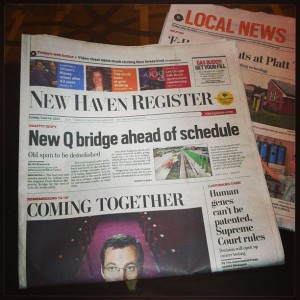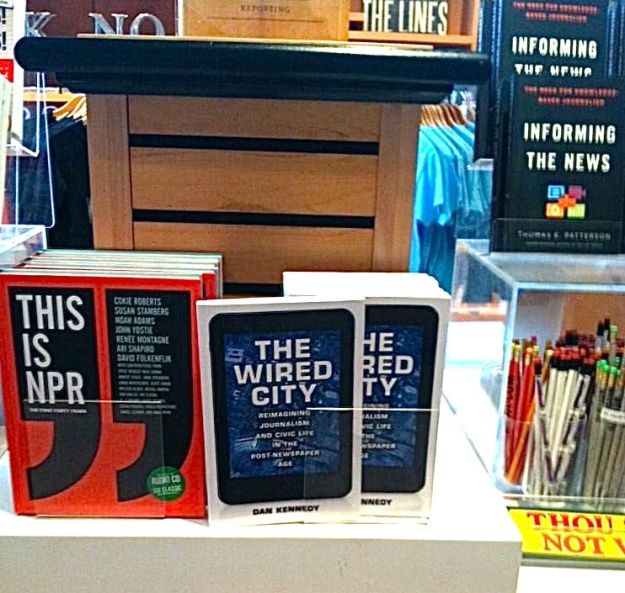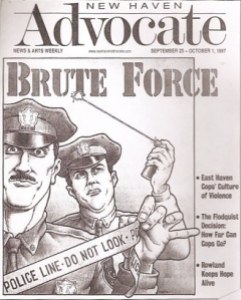
John Henry
This article was posted earlier at WGBH News.
The local media community has been buzzing since Tuesday, when Jason Schwartz’s 5,000-word Boston magazine article on the state of The Boston Globe under John Henry went live. The piece is chock-full of goodies, and you should read the whole thing. As you do, here are six takeaways for you to ponder.
1. It could have been a lot worse. Although we knew that Douglas Manchester, the right-wing hotel magnate who bought the San Diego Union-Tribune and unforgivably renamed it U-T San Diego, was interested in buying the Globe (he even threatened legal action after it was sold to Henry instead of him), it is nevertheless chilling to read Schwartz’s account of Manchester’s coming in and kicking the tires after the New York Times Co. put the Globe up for sale.
As I wrote in my book about online community journalism, “The Wired City,” Manchester has been described as “a minor-league Donald Trump” who uses his newspaper to promote his business interests as well as conservative causes such as his opposition to same-sex marriage.
In the Boston magazine article, Globe editor Brian McGrory tells Schwartz that “some potential bidders” — and by “some,” it’s clear that he’s including Manchester — would have “cut the living bejesus out of the place.” And Schwartz includes this delicious anecdote: “During the U-T San Diego presentation, people who were in the room attest, Manchester at one point instructed McGrory to call him ‘Papa Doug.’ McGrory did not call him Papa Doug.”
2. It’s official: The Globe is moving. Even before Henry won the Globe sweepstakes, it was clear that the next owner was likely to sell the paper’s 1950s-era Dorchester headquarters for redevelopment — a move that would presumably recoup virtually all of the $70 million Henry paid to purchase the Globe, the Telegram & Gazette of Worcester and related properties.
Henry has now made it official, telling Schwartz his goal is to move the paper to a smaller space with better access “in the heart of the city.”
Of course, the Globe still needs a printing press, not only for its own use but for other publications it prints under contract — including its tabloid rival, the Boston Herald. One likely possibility: the Telegram & Gazette’s printing facility in Millbury, which Henry said he was keeping when he announced recently that he was putting the T&G up for sale.
3. The two-website strategy needs an overhaul. Since the fall of 2011, the Globe has offered two websites: BostonGlobe.com, a paid-subscription site offering Globe content and a few extras; and Boston.com, a free site that’s been around since the mid-1990s.
The problem, Schwartz tells us, is that Boston.com, stripped of most Globe content, has been struggling, while BostonGlobe.com hasn’t produced as much revenue as Globe executives would like. The next step: a looser paywall for BostonGlobe.com to encourage more social sharing and a mobile-first Boston.com that’s still in development. (Joshua Benton has more at the Nieman Journalism Lab.)
4. Henry wants to reinvent the newspaper business. This week’s New Yorker includes a rather dispiriting account by George Packer of how Jeff Bezos and Amazon.com took over the book business. Anyone looking for signs that Bezos has a clear idea of what to do with The Washington Post, which he agreed to buy just days after Henry’s purchase of the Globe was announced, will come away disappointed — although he is, to his credit, spending money on the Post.
By contrast, Henry comes across as energized, bristling with ideas — peppering Brian McGrory with emails at all hours of the night — and getting ready to unveil new products, such as standalone websites that cover religion, innovation and other topics.
“I wanted to be a part of finding the solution for the Globe and newspapers in general,” Henry tells Schwartz. “I feel my mortality. I don’t want to waste any of the time I have left, and I felt this was a cause worth fighting for.”
5. Mike Barnicle is lurking off stage. If you were worried when you spotted Barnicle with Henry during the World Series, well, you were right to be. Barnicle, who left the Globe in 1998 after a career full of ethical missteps finally caught up with him, really does have Henry’s ear — and even supplied him with the email address of John Allen, the National Catholic Reporter journalist whom Henry successfully talked into coming to the Globe.
The old reprobate hasn’t changed, either, supplying Schwartz with a great quote that artfully combines religion with an F-bomb.
6. The executive team is now in place. By accepting publisher Christopher Mayer’s resignation, naming himself publisher and bringing in former Hill Holliday president Mike Sheehan as his chief executive officer, Henry has completed a series of moves that have remade the top layer of Globe leadership. McGrory is staying. Andrew Perlmutter, who made his bones at Atlantic Media and The Daily Beast, has replaced Jeff Moriarty, who left for a job in Britain, as the Globe’s chief digital strategist.
That’s not to rule out further change, especially if Henry’s goals aren’t met. But the sense you get is that Henry — to use a Red Sox analogy — now has his Larry Lucchino/Ben Cherington/John Farrell triumvirate in place. No doubt they all realize that winning a world championship is a lot easier than finding a profitable way forward for the beleaguered newspaper business.





